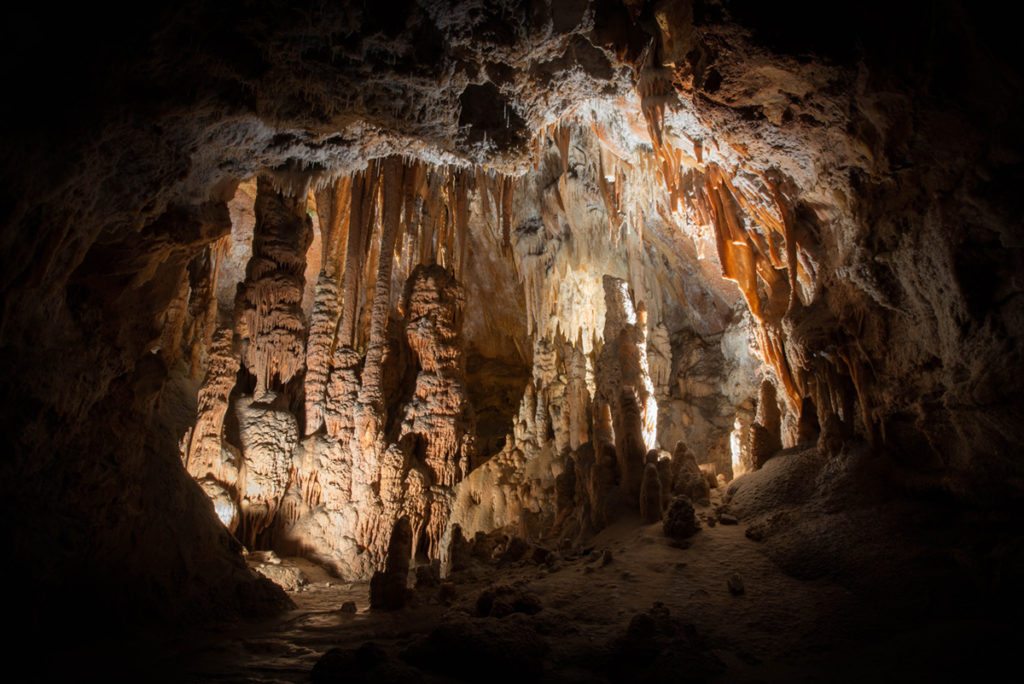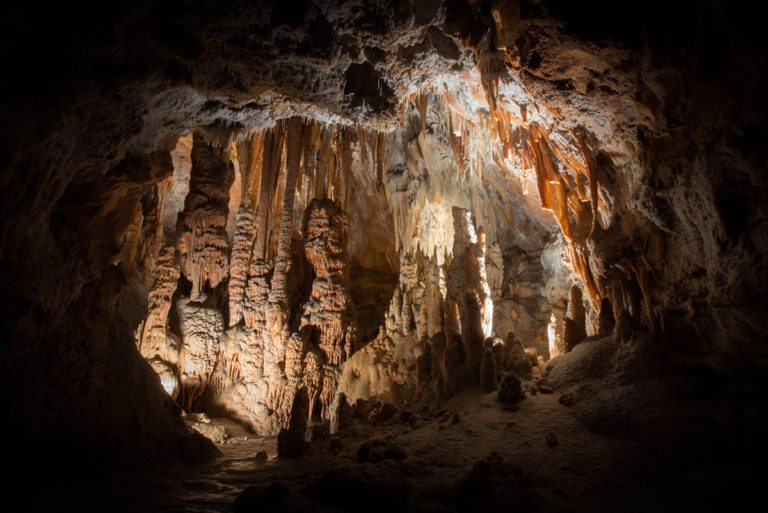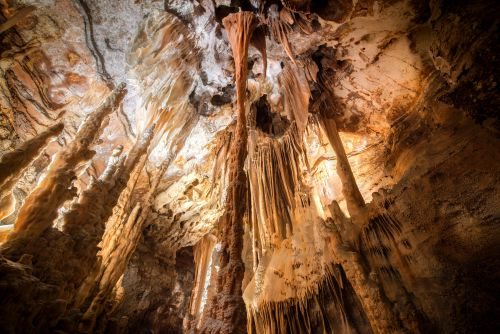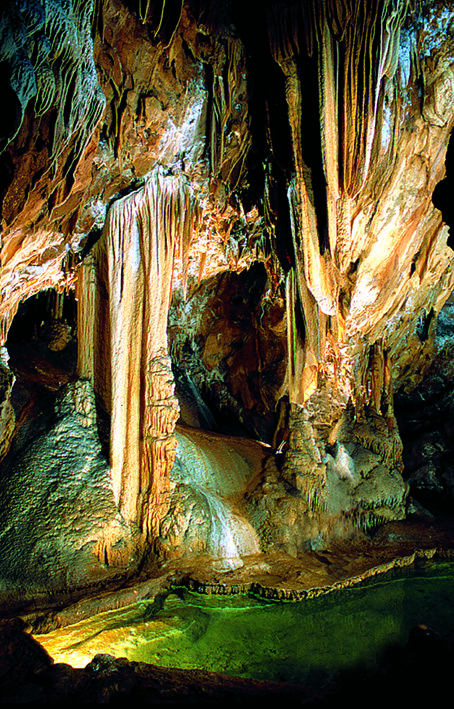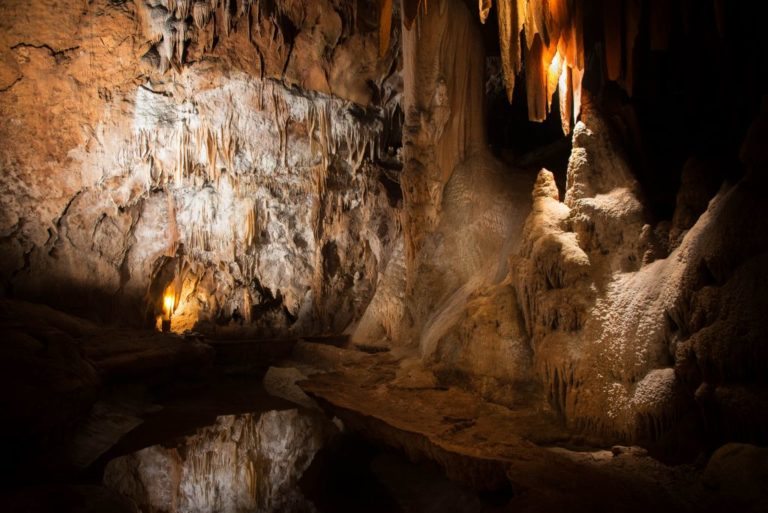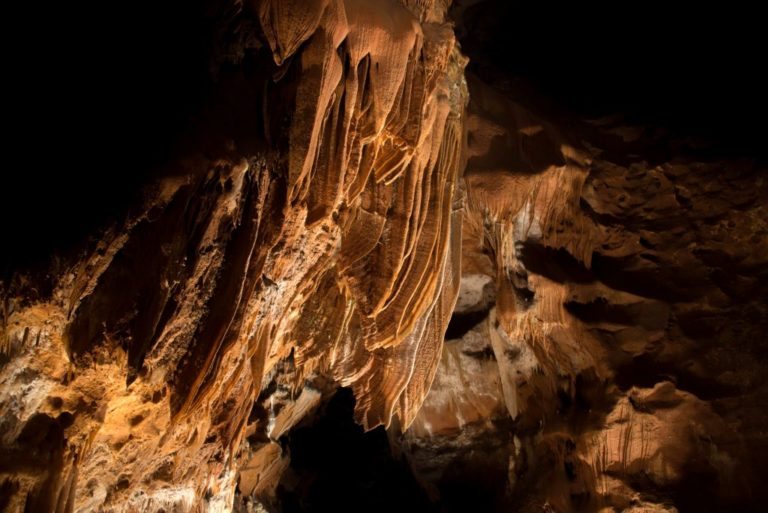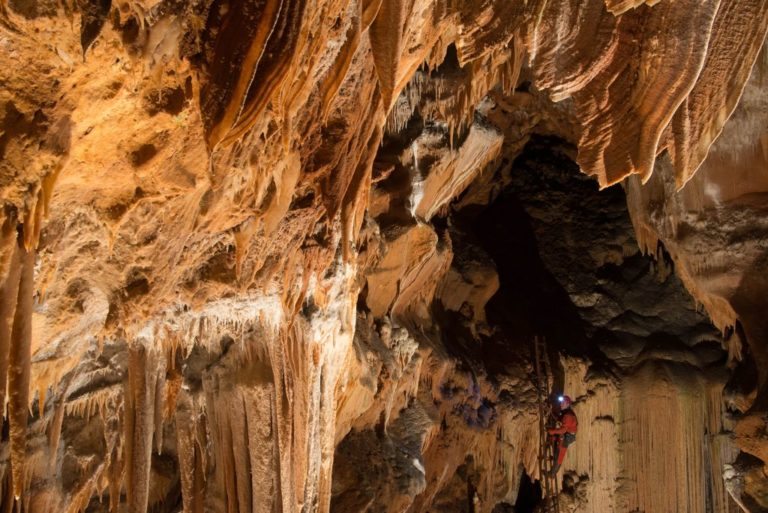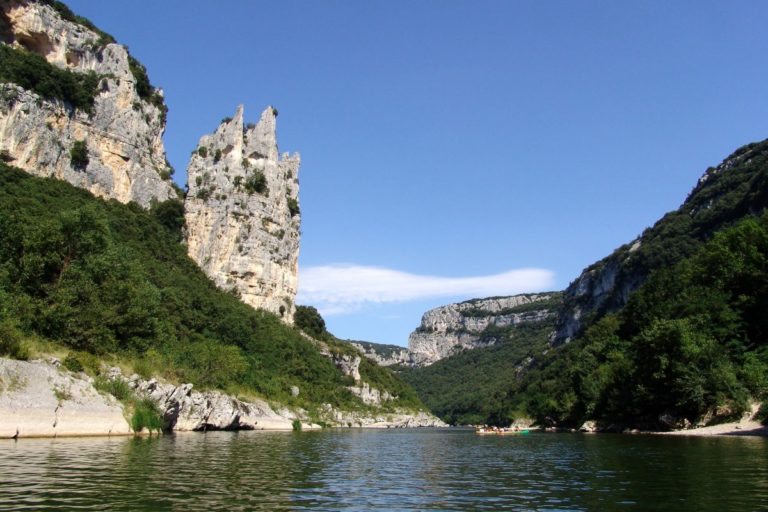The Madeleine Cave owned by the district of St Remèze (07700) is one of the main touristic caves in south-eastern France. It is located in the middle of the cliff on the left bank and in the heart of the Ardèche Gorges. It has the advantage of offering the House of the National Natural Reserve of the Ardeche Gorges in addition and of offering the most beautiful viewpoint on these.
Description
Actually, the cave is made up of two cavities connected by an artificial tunnel of 20m long dug in 1969.
The Escure Cave or the Obscure Cave or the Bear Cave which corresponds to the upper part. It opens through a beautiful porch near the Canyon wall, now the main entrance to the complex. At one time, at the end of the 19th century, it was exploited for its phosphates. It served as shelters for families in the village during the retreat of German troops in August 1944.
The Madeleine Cave which grows lower, with larger volumes. The natural entrance to the Madeleine Cave is at the bottom of the cliff, 50m above the level of the Ardèche river. This was the subject to summary excavations delivering innumerable fragments of Neolithic pottery. There is an open upper entrance on the wall.
The entire tour extends over 500m in length, one kilometer round trip, and the progression stretches in stages over 65m deep. The visit lasts about one hour.
History
The Madeleine cave was discovered in 1888 by Germain Rigaud, a village shepherd nicknamed « the godson » who had lost one of his goats, with a candle for all lighting. It was then visited by many renowned speleologists such as Robert de Joly in 1936, Father Glory in 1946 and Jean Trébuchon in 1952/53, who drew a first map.
There is also the research, topography, and unblocking work of P. Girodias, a mining engineer, which led to the recognition of the upper rooms at the end of 1960. These various explorations made it possible to identify approximately four kilometers of galleries.
It was first briefly operated, starting in 1952, by Léon Jouve, in connection with its naturist campsite which stood at the foot. From the plateau and a fairly steep staircase, the Cave of la Madeleine was then the only possible access to the river.
The construction of the touristic road of the Gorges of the Ardèche started in 1967. It encouraged the Mayor of the time, Charles Boulle, to develop the cave, which was opened to the public on August 10, 1969, after the tunneling by a Gard company. The cave was first operated by the Joint Syndicate of Equipment of the Ardeche (SMEA) from 1969 to 1979. Then the town of Saint Remèze took it over and operated the site on its own, under direct management.
Scientific and heritage interest
By its large volumes, the profiles of the galleries, the hollow forms on the vaults or on the walls, the cave of la Madeleine in the strict sense allows us to understand the dynamics of the formation of a karst cavity and its hydrological functioning.
The second major interest of the cave is to present most types of concretions and to be able to appreciate their spectacular development. Draperies occupy a prominent place. Another originality is the wealth of colors throughout the development of the visit, an unusual panel of colors, from brown, red, ochre to immaculate white.
The set of two caves, with their stepped galleries, offers an interesting verticality that sets it apart from many other cavities.
According to J. Martini, the volumes of the cave would have mainly formed in a submerged environment between 6 and 2 million years, i.e during and after the « Messinian salinity crisis », and the concretioning would have followed during the drying up phase.
The House of the Reserve
It is located next to the ticket office and the shop of the Madeleine Cave. It is a museum area to better understand and learn to respect this exceptional environment of the Gorges of the Ardèche that have been classified as a National Nature Reserve for more than thirty years.
The approach of this permanent exhibition is multidisciplinary and aimed at all audiences. It comes in the form of panels, models, visuals, and interactive and fun terminals. At the heart of the room, a large model reproduces the canyon, with keys to locate the main rapids, bivouacs, the most beautiful lookouts, caves and major sites.
The Lookout
Directly on the top of the cliff, it offers an exceptional panoramic view on the Ardèche canyon, a deep notch of more than 200m in the limestone mass, particularly downstream.
We can see magnificent landscapes of vertical walls, porches, caves and ledges, wild shores, refuges of a unique biodiversity.
On the left bank, downstream, sticks out the Cathedral Rock, one of the natural wonders of the Gorges. The lookout still allows to apprehend the digging of the Gorges essentially linked to the variation of the Mediterranean sea (including the famous « Messinian salinity crisis ») and to the uprising of the eastern edge of the Massif Central under the effect of the alpine thrust.

